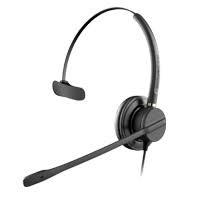
Top 10 ways to improve Dragon NaturallySpeaking’s accuracy
You probably don’t know this but Dragon ships with a full PDF manual of over 200 pages. It’s so long that most people don’t read it.However there is some real useful information contained within the document. It’s called the Dragon NaturallySpeaking user guide. It will be on your Dragon DVD disc .I’ve condensed the top 10 ways to improve Dragon voice recognition accuracy below. I hope you find it useful. Please make a post on our Facebook page if you do or if you have any other questions about Dragon Naturally Speaking.
Before reading - Make sure you have bought the right version of Dragon, as that affects accuracy the most.
Doctors need the new Dragon Medical One for maximum accuracy.Lawyers need Dragon Legal.
Business People need Dragon Professional.
Top 10 ways to improve accuracy with Dragon Naturally Speaking
Here’s our top 10 list of ways to optimize Dragon’s ability to recognize your speech.
1. Use careful dictation practices. Dictating with Dragon is different than talking to someone. When we talk, we often hesitate, mumble, slur words, or leave words out altogether, but we’re still able to understand each other. And people can easily filter out noise, which lets us understand each other, even in noisy environments, like restaurants, but speech software needs help separating dictation from other sounds. With dictation, the idea is to speak in a consistent speed and volume – try not to hesitate, exaggerate your pronunciation, or talk loudly or slowly. So make sure background noise doesn’t drown you out and that you have the microphone close enough for Dragon to hear you properly, usually about an inch from your mouth and to one side. Also, remember to dictate using complete phrases, so that Dragon gets the context. For example, we use our experience and common sense to decide whether someone said “I Scream,” or “Ice Cream.” But Dragon doesn’t understand what words mean, so it can’t use common sense the way we do. Instead, Dragon interprets your speech by using its knowledge of words that tend to appear together. Dragon calculates how frequently you use words and phrases and can offer you suggestions when it makes mistakes. Try to think about your whole phrase or sentence before you start dictate it, and you’ll be on your way to dictation mastery. For more information, see Dictation Basics.
2. Import lists of words or phrases. Rather than adding words or phrases one at a time, you can import one or more lists. The lists can even include spoken forms. This method can be particularly useful for businesses that have a lot of people dictating similar names or words or if you need to use more than one user profile. For more information, see
Preparing a list of custom words to add to a Vocabulary.
3. Learn from specific documents. You can select specific documents or entire folders containing typical documents, your own or those of others, that reflect the type of dictation you will typically do. You can then train Dragon how you pronounce unusual words or
about proper names you need to dictate. For example, if you were an academic and ran the tool to add words from essays and articles in your field of study, or a blogger using a lot of new acronyms, Dragon would automatically learn your words, word frequency and contexts, and make better guesses about your speech. Dragon also moves words from its backup dictionary to its active vocabulary based on the scan. If there are a lot of words to train, you’ll need to plan this activity when you have a few minutes to spend adding the words.
4. Learn from sent e-mails. Similar to Learn from specific documents, this tool helps refine your profile by analyzing representative text, only in this case it analyzes e-mail messages sent from your installed email program. In addition to analyzing frequency of word use and typical word sequences, it can suggest contact names you may want to add to the
vocabulary. Note: For the first run, plan this activity when you can let Dragon use your computer for 5 to 30 minutes. Subsequent scans build on the first one, however, and are much faster.
5. Run Accuracy Tuning. This process refines your user profile by analyzing audio and text data that Dragon archives from your dictation. You can launch Accuracy Tuning from the New DragonBar or Classic DragonBar Audio menu or schedule it to run later. Choose a
time when your computer is on but you can close Dragon – for example, when you typically have a meal or a meeting.
6. Perform additional training. Dragon learns about how you pronounce words and your vocal tones when you create your user profile, but it can learn more if you read one or more of the supplied training texts. We recommend you read a training text after a few hours of using Dragon. On the DragonBar, select Audio > Read Text to Improve Accuracy.
7. Turn off what you don’t use. Visit the Performance Assistant for useful strategies for optimizing accuracy and speed with Dragon. For example, you can turn off the ability to “voice-click” menus, buttons and other controls in some or all programs, or the ability to open items from the Windows Start menu or desktop. Turning off these options reduces
Dragon’s use of computer resources and reduces the possibility of isolated words or phrases being executed as commands, such as “Click Send” or “Open Network.”
8.To have Dragon recognize when you change a custom or builtin auto-formatting option or word property for alphanumeric text or a word. Dragon automatically applies formatting to many common spoken forms of text, such as Web and e-mail addresses, street addresses, dates, numbers, units of measure, and so on. The Smart Format Rules feature recognizes your changes to rules and offers to customize the settings to suit your needs as you work. You can also add custom word properties to words to make Dragon’s text entry more intuitive and efficient. By setting word properties, you specify a variety of options that can be associated with vocabulary entries. You can specify that a word be preceded or followed by specific characters and customize properties for placement or handling. For example, question marks and exclamation marks have default properties of Precede by (nothing)” and “Format the next word capitalized.”
Or, you can specify one or more for words. If the Alternate printed form checkbox is selected for “meter,” when you dictate the word after a number Dragon enters only “m.” For example, if the Alternate form checkbox is not selected, and you dictate “meter,” Dragon types the full word, “meter.”
9. Make corrections. You can prevent many errors using the methods listed above, but if an error does happen, correcting it will help Dragon to learn. Re-dictating or retyping words or phrases are sometimes the fastest approach, but Dragon provides a lot of flexibility about how and when you correct errors.
10. Save your user profile Remember that as Dragon works on your documents with you, it needs to save what it learns. After you correct dictation, train words, or perform any of the other accuracy optimization operations, save your profile to save your changes for your next session.So there you go. I personally tried most of these tips and they do work.Each one of these techniques slightly improves the accuracy and in total it’s quite noticeable






